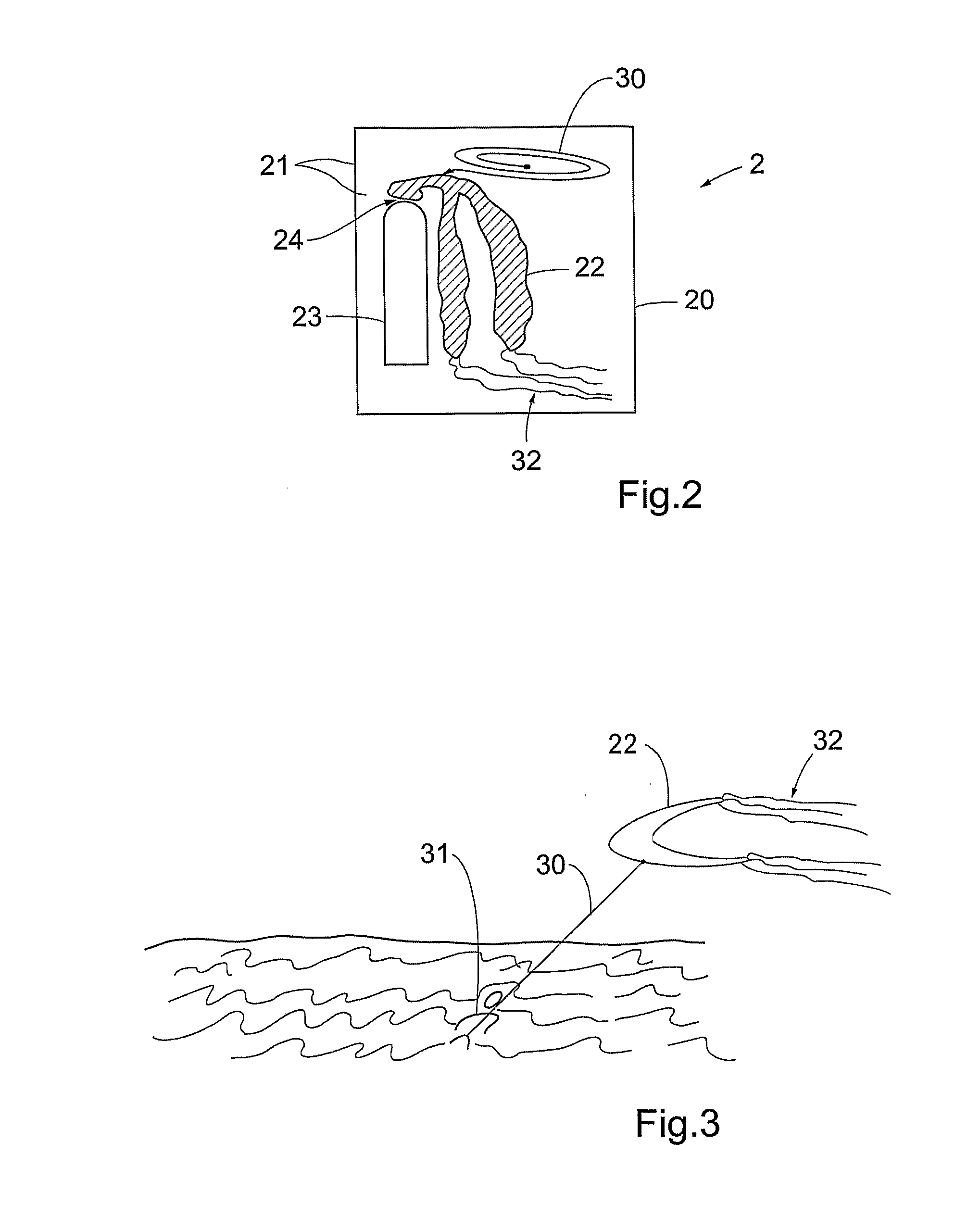Location signaling device
a signaling device and location technology, applied in the direction of lighter-than-air aircraft, instruments, transportation and packaging, etc., can solve the problems of difficult to locate a person swimming in the open ocean from a larger distance, the effective surface of the wing is reduced, and the swimmer itself is difficult to discover, so as to reduce the lifting force generated by the wing, the effect of increasing the wind speed and reducing the effective surface of the wing
- Summary
- Abstract
- Description
- Claims
- Application Information
AI Technical Summary
Benefits of technology
Problems solved by technology
Method used
Image
Examples
Embodiment Construction
[0026]In an exemplary embodiment of the invention according to FIG. 2, a location-signalling device 2 is shown in the non-inflated condition. The device comprises a housing 20 and has approximately the size of a packet of cigarettes, although other designs, shapes, and sizes are possible, depending on the intended use as well as adherent conditions. The device comprises a fastening means 21, e.g. for fastening to an object such as a life saving jacket, a backpack, or other objects. The packet 2 contains an inflatable wing balloon 22. The wing balloon 22 is self-inflating upon activation, wherein the gas originates from a gas storage device 23, such as a gas cylinder containing compressed gas. The size of the gas cylinder is adapted to the size of the inflatable volume of the wing balloon. For instance, the gas cylinder has to have a size of 1 / 200 of the wing balloon inner volume at a compression pressure of 200 bar of the gas inside the gas cylinder. The gas for inflating the wing b...
PUM
 Login to View More
Login to View More Abstract
Description
Claims
Application Information
 Login to View More
Login to View More - R&D
- Intellectual Property
- Life Sciences
- Materials
- Tech Scout
- Unparalleled Data Quality
- Higher Quality Content
- 60% Fewer Hallucinations
Browse by: Latest US Patents, China's latest patents, Technical Efficacy Thesaurus, Application Domain, Technology Topic, Popular Technical Reports.
© 2025 PatSnap. All rights reserved.Legal|Privacy policy|Modern Slavery Act Transparency Statement|Sitemap|About US| Contact US: help@patsnap.com



